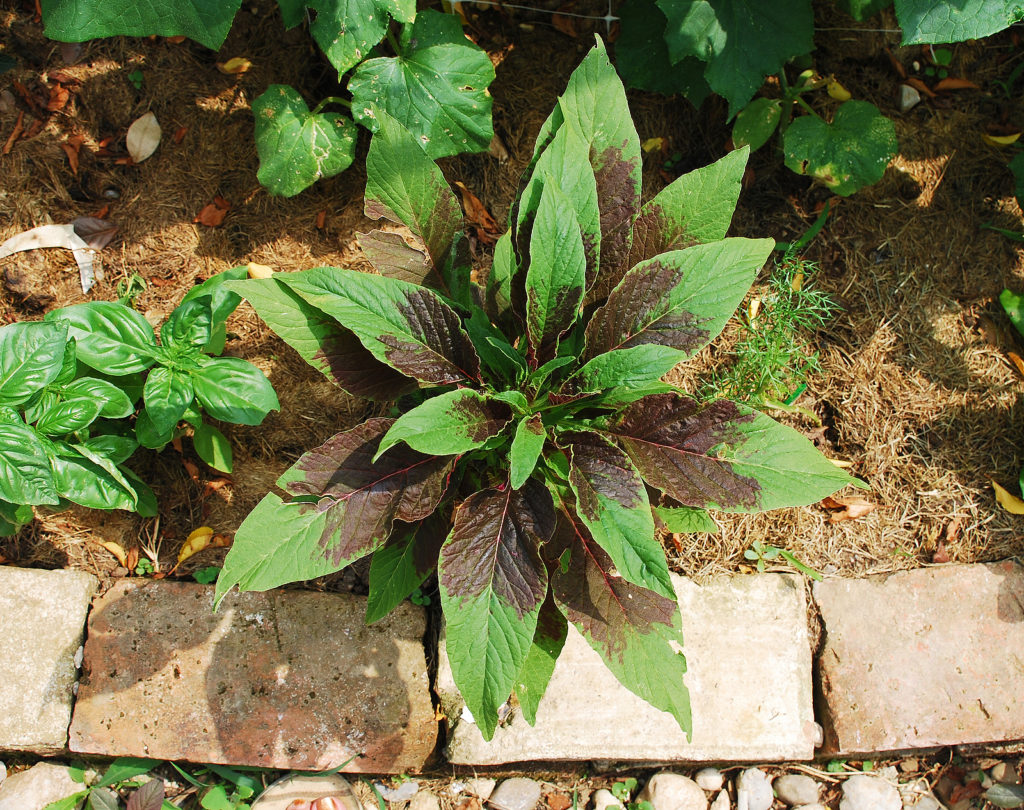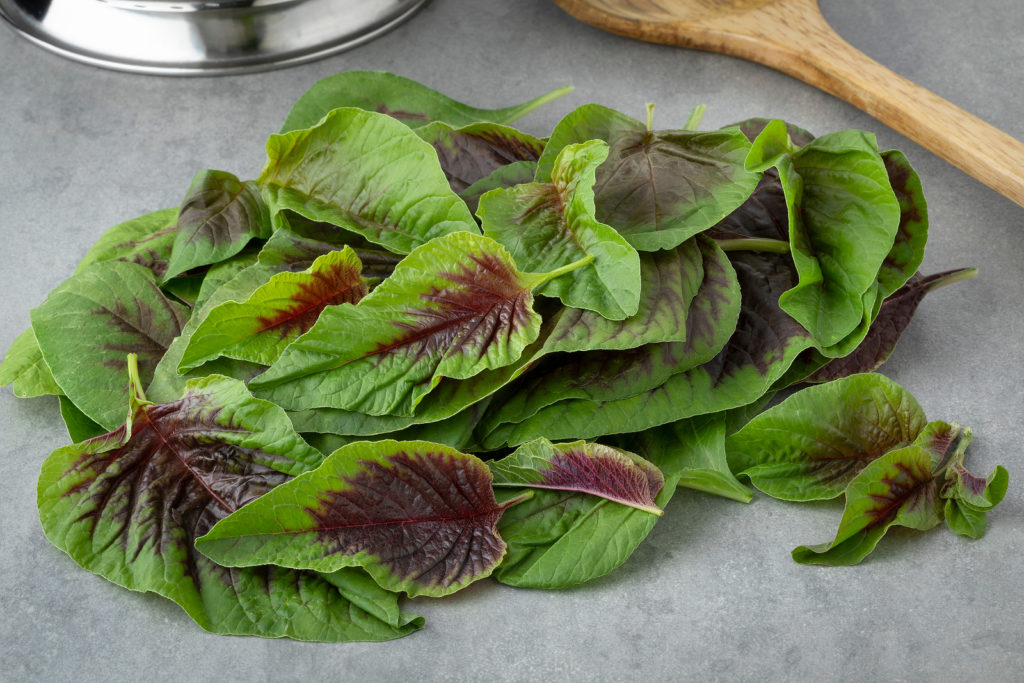Vegetable amaranth–often called tampala or Chinese spinach–is a quick-growing annual that produces an abundance of edible leaves. The leaves can be harvested cut-and-come-again over several weeks.
Vegetable amaranth is a tropical plant that grows best in warm weather where the average low temperature is 68°F (20°C) through the growing season. It is a warm-weather, summer alternative to lettuce and spinach which are cool-weather spring and autumn crops.
Vegetable amaranth’s young leaves can be used raw in a salad; the larger, older leaves are best when lightly steamed. Vegetable amaranth can be used in any recipe that calls for spinach. The greens are rich in calcium, magnesium, iron, and vitamins A and C.
Vegetable amaranth is not the species grown for grain, that species is Amaranthus cruentus.
Vegetable Amaranth Described
- Vegetable amaranth–botanical name Amaranthus tricolor–bears showy, ovate leaves in shades of green, purple, flaming scarlet, and maroon.
- Vegetable amaranth grows 18 inches (45cm) to 4.5 feet (1.4m) tall.
Where to Grow Vegetable Amaranth
- Grow vegetable amaranth in loose, humus-rich soil, well-drained soil. It can adapt to a wide range of soils.
- Plant vegetable amaranth in full sun.
Vegetable Amaranth Growing Time
- Vegetable amaranth is a warm-season crop that thrives in a warm, humid climate.
- It is a good choice for summer growing bewteen spring and fall lettuce and spinach crops.
- Grow vegetable amaranth in the time of the year when the average minimum temperature is 68°F (20°C).
- Sow vegetable amaranth seeds indoors 3 weeks before setting small plants in the garden.
- Set young plants in the garden after all danger of frost has passed and young plants are 3 or more inchs (8cm) tall with four to seven true leaves.

Planting Vegetable Amaranth
- Sow seeds 1/4 inch deep. Space plants 6 inches (15cm) apart.
- Cover seeds with a half inch of sifted compost to keep the soil from crusting; this will aid germination.
- Vegetable amaranth can be broadcast and grown in wide rows.
- Unused seed is viable for about seven years.
Container Growing Vegetable Amaranth
- Vegetable amaranth can be grown in containers during warm weather.
- Choose a container 12 to 14 inches (30-35cm) wide and at least 12 inches deep.
- Keep the soil evenly moist, not wet.
Companion Plants for Vegetable Amaranth
- Grow vegetable amaranth with carrots and onions.
- Vegetable amaranth is a good choice to follow ealry plantings of peas, lettuce, and spinach.
Watering and Feeding Vegetable Amaranth
- Keep the soil evenly moist when growing vegetable amaranth.
- A steady supply of moisture will produce the best quality leaves.
- Give vegetable amaranth ample nitrogen.
Caring for Vegetable Amaranth
- Weed around vegetable amaranth to eliminate competition for moisture and nutrients.
- Where the weather is hot or dry, mulch around vegetable amaranth to conserve soil moisture.
- Generally, vegetable amaranth is a quick grower and the leaves will shade the ground as the plant matures.
- When plants are 4 to 6 inches (10-15cm) tall, pinch off the top rosette of leaves to encourage bushiness, which means more harvetable leaves.
Vegetable Amarant Pests and Diseases
- Vegetable amaranth can be attacked by caterpillars and stem borers.
- Leaf curl and stem rot can occasionally bother vegetable amaranthus.
Harvesting Vegetable Amaranth
- Pick tender rosettes of leaves as they develop or the entire plant can be harvested cut off at the ground.
- To pick leaves cut-and-come-again, pinch off the leafy rosette at the top of the plant when the plant is about 6 inches (15cm) tall. This will cause additional stems with leaf rosettes to develop. Pick young rosettes as they develop.

Vegetable Amaranth Kitchen Use
- Vegetable amaranth’s young leaves can be used raw in a salad; the larger, older leaves are best with lightly steamed.
- Amaranth agrees can be used in any recipe that calls for spinach.
- The greens are rich in calcium, magnesium, iron, and vitamins A and C.
Storing and Preserving Vegetable Amaranth
- Vegetable amaranth can be frozen like spinach.
Vegetable Amaranth Varieties to Grow
- Vegetable amaranth is available under several common names: Chinese spinach, hin choy, edible amaranth, edible amaranth spinach.
- Cultivars include ‘Aurora Yellow’ which has a topknot of ellow leaves; ‘Flaming Fountains’ with narrow scarlet and brones leaves; and ‘Illumination’ with bronze lower leaves and flaming red upper leaves.
About Vegetable Amaranth
- Botanical name: Amaranthus tricolor; Amaranthus cruentus is the species grown for grain
- Family: Amaranthaceae
- Origin: Tropical regions worldwide
Related articles of interest:
How to Grow New Zealand Spinach















